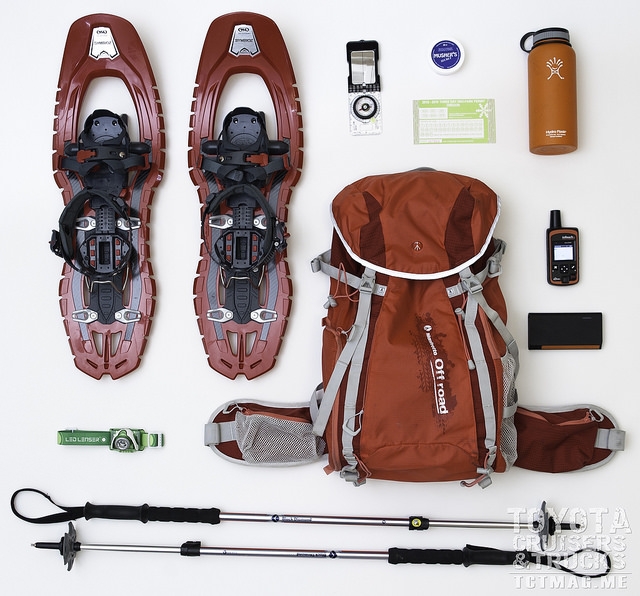Low-Cost Winter Sport
The great thing about the sport is it can be enjoyed without investing a lot money in gear. Chances are you already own most of the winter gear you would need to start snowshoeing. Many community gear shops know for renting bicycles during the summer also rent snowshoes during the winter. If you choose to buy your own gear, shoes can be purchased online for as little as $120 and a complete setup (snowshoes and poles) can be had for under $200.
Where to Go
As the popularity of snowshoeing increases more and more communities are investing in the development of dedicated Nordic trail systems that cater directly to snowshoers. Many of these trails piggyback on the multitude of groomed trail systems already used by cross country and Nordic skiers. Several communities have begun installing warming huts as destinations for winter explorers to warm up next to a wood-burning stove. I recently visited one such warming hut on a snowshoeing trip near Oregons Mt. Bachelor. The hut was fully stocked with fire wood and I had a great conversation with some of the locals who were out enjoying the fresh powder the area had just received.
While groomed trails are a popular choice for many, there are other options for the more adventuresome. Many of the US Forest Service cabins and yurts available for rent during the summer months can also be rented during the winter season. Often headed by propane or wood stoves, these cabins can range in size from small to large and provide a great base for those in search of a great weekend adventure. My favorite snowshoeing trips was the time Krista and I celebrated New Years by snowshoeing into one of these cabins and spending the weekend exploring the area.
Stay Safe!
Related Articles
Thinking about setting out on a snowshoeing adventure? Here are a few things to remember to keep you safe as you explore the back country on snowshoes.
Share Your Travel Plans: Make sure you let at least one person know where you will be exploring and when you will be returning. If you fail to check in with them at the end of the day they can alert authorities to your general location.
Stay Hydrated: It is important to stay hydrated while exercising, even during the winter months. Vacuum insulated water bottles are a great way to keep your water from freezing during your hike.
Layer Up: The key to staying warm and dry in variable weather conditions is wearing multiple layers. Base layers are great for when the sun is out but the trail may track through the shadows. Dressing for the anticipated conditions, and packing an extra layer, is key.
Be Prepared: A leisurely trip into the back country can turn deadly so it is important to go prepared. Avalanche beacons and rescue tools are cheap insurance if you and your friends decide to venture into areas prone to avalanches. At a minimum you should always carry a first aid kit, map of the area, and a compass or GPS.
[flickr set=72157664404562263]
To get your copy of theWinter 2016 Issue:FIND US ON: |








